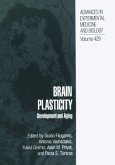In order to supplement Dr. Johnson's review we wish to make two points: I) not all grossly similar lesions should be considered t. o be due to the same etiology, even if experimentally documented, and 2) relatively few infections (syphilis, toxoplasmosis, cytomegalovirus, herpesvirus and rubella) and no immunologic disorders (except for kernicterus due to hyperbilirubinemia) are known to affect the developing human nervous system. Admittedly, since most human malformations are of unproven cause, these two points are not mutually exclusive. Rather, the challenge remains to show that any of the experimental models relates to any of the human diseases. In particular, the porencephaly-hydranencephaly spectrum could be due to ischemia in the watershed distribution of one or more branches of the internal carotid ar teries; and aqueductal stenosis could be due to secondary blockage by blood clots or debris related to hemorrhage or necrosis in the germinal matrix or periventricular whitematter, lesions most likely due to hypoxia-acidosis in premature infant, who die most often of the concomitant respiratory distress syndrome. REFERENCES Altshuler. G. : Toxoplasmosis as a cause of hydranencephaly. Am. l. Dis. Child. 125: 251-252 (1973). Beer. A. E. and Billingham. R. E. : Immunobiology of mammalian reproduction. Adv. Immunol. 14: 1-84 (1971). Berenberg. W. and Nakervis. G. : Long-term follow-up of cytomegalic inclusion disease of in fancy. Pediatrics 46: 403-410 (1970). Boniuk. M. and Zimmerman. L. E. : Ocular pathology in the rubella syndrome. Arch. Ophthalmo!. 77: 455-473 (1967).








